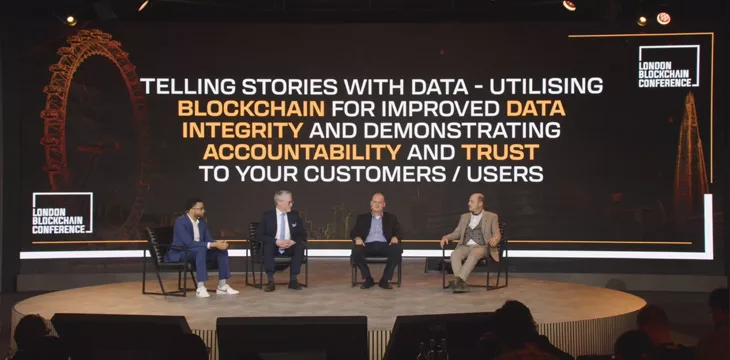|
Getting your Trinity Audio player ready...
|
Implicit in the core message of the London Blockchain Conference 2023 is the idea that data is now everywhere, being collected at scales never seen before by an incalculable number of connected devices.
You could practically sense this invisible process taking place while sitting in a cavernous conference hall containing LBC’s Business stage, awaiting the next item on the event’s packed agenda: “Telling Stories With Data.” The room contained hundreds of people, from sharply dressed businesswomen to dressed-down techies, all with devices in their hands or on their wrists, taking in enough data to fill a bookshelf on any given day.
This is true everywhere you go, and these devices are not limited to the phone in your pocket or the desktop computer in your living room. In 2023, just about anything you can conceive of will be collecting data: the lampposts you pass on your way to work each day, the automated doors letting you into the supermarket, and the microwave sitting in your kitchen.
But more than the sheer scale of what’s being collected, what truly matters is the sense you make out of it. In other words, the important thing is the story you can tell with that data.
This was the central theme of one of LBC 2023’s earliest panels, the full name of which is “Telling Stories With Data – Utilising Blockchain for Improved Data Integrity and Demonstrating Accountability and Trust To Your Customers/ Users.” Hosted by developer and consultant Joshua Henslee, the room welcomed Stephan Nilsson, CEO and co-founder of UNISOT AS; Chris Light, CEO and founder of E-Livestock Global LLC; and Shem Booth-Spain, co-founder and CEO of Blarecast Systems.
This lineup made for a fairly practical session. All three guests are using the blockchain to deliver value to their respective industries right now, and as a result, are well-placed to comment on the benefits and challenges of incorporating the blockchain into business.
Take Nilsson, for instance. UNISOT takes its name from the concept of a universal source of truth, and leverages the blockchain to store and track data on products as they move through the supply chain so that all links in the chain have a complete—and accurate—picture of each product’s history.
“The reason is simple: in my experience, I realized that you have a lot of data, but they’re all enclosed in data silos in every single company. There needs to be integration between them to exchange information,” he said. “We can prove the quality of products. We can prove that the products are sustainable, prove where they’re coming from.”
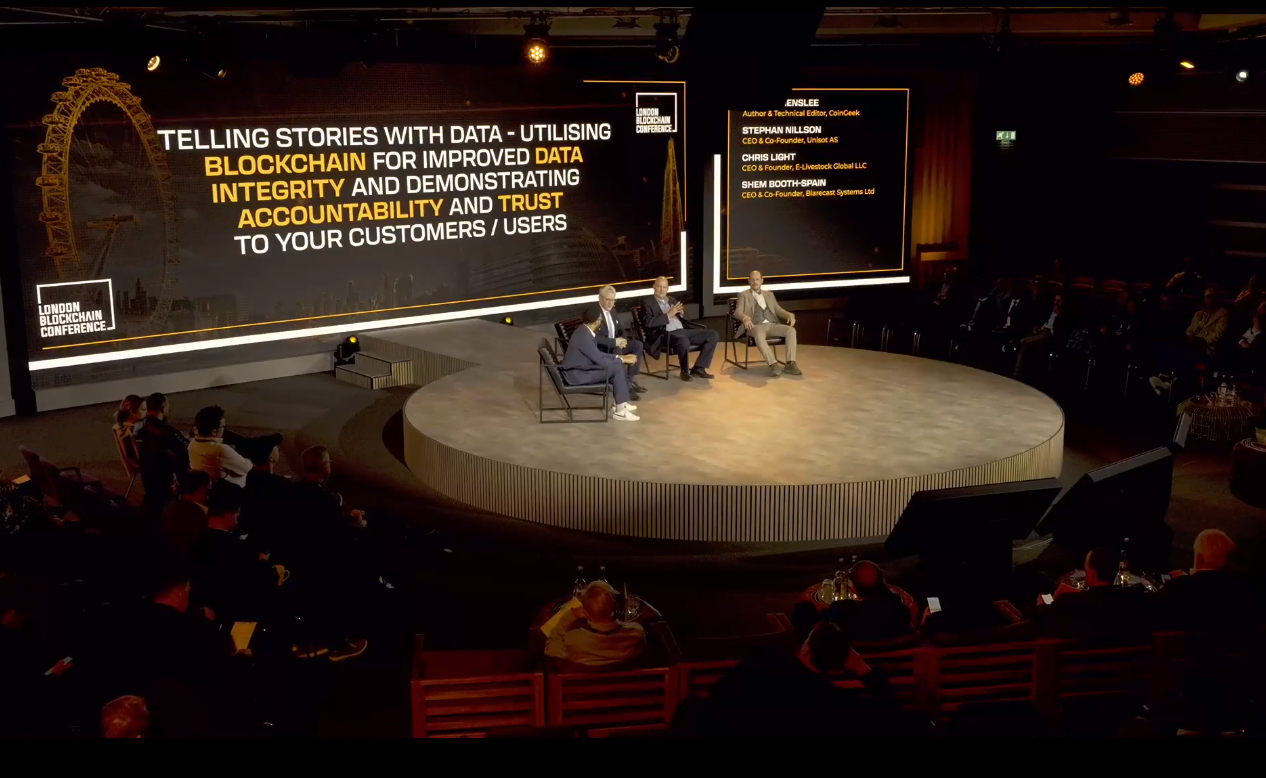
He added that the lack of this data can be a problem at a time when businesses move fast.
“In today’s changing world, where a company is changing suppliers and distributors more regularly, it’s not feasible to build new interfaces every time that happens. I realized we need a global database,” said Nilsson.
As a result, UNISOT has been able to collect this data and use it to tell a story—in particular, a story of proof and provenance.
“We can prove the quality of products. We can prove that the products are sustainable, prove where they’re coming from,” he said.
Or how about Chris Light’s E-Livestock, a company that uses the blockchain to manage data on livestock welfare. The livestock industry isn’t likely to be top of the list of those being revolutionized by immutable data ledgers, but running a farm involves a tremendous amount of information—information which is often paper-based but doesn’t need to be. And capturing this data is just the start, says Light.
“You collect the data and store it on the blockchain, but we’re discovering that the opportunities from there are unexpected and almost endless,” he noted.
By way of example, Light tells of a farmer in the U.S. who discovered, upon auditing their livestock, that he actually had thousands less cows than they thought.
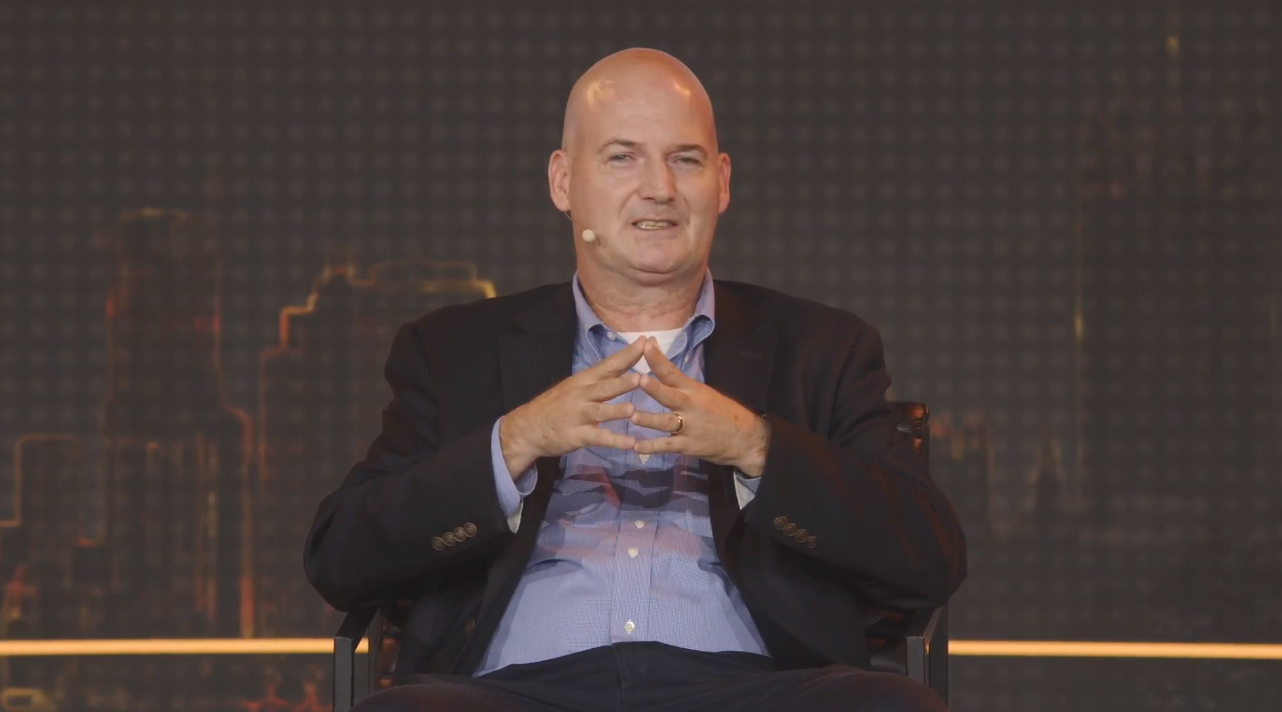
Or how about livestock businesses in developing countries, where the benefits of blockchain to farmers go far beyond mere information collection. Many farmers in countries with financial instability or volatile currencies often store their wealth in their business rather than keeping it in a bank or stuffing a mattress with cash. This means that making use of that wealth can be difficult—something that can put farmers in a corner when negotiating prices.
“When school fees come due, the person doing the transaction knows this, and the price of the animal drops. But with our system, they can collateralize their asset,” Light said.
So, being able to turn this data into a story can deliver enormous benefits to businesses and entire industries. But as important as a narrative is to data, another narrative stands in the way of true blockchain adoption and was referenced by all the guests on stage: the idea that blockchain is the same thing as ‘crypto.’
“One of the reasons we differentiate between Bitcoin and blockchain, you sometimes sit down with someone and realize they think you’re talking about crypto,” said Booth-Spain of Blarecast, a next-generation music distribution platform built on the blockchain.
This was echoed by Nilsson of UNISOT: “There’s a big need out there for these solutions, but we still have problems. We need to reeducate customers, and talking about that, we have the blockchain technology and not the crypto craze or the NFT craze. We have a system that works and scales.”
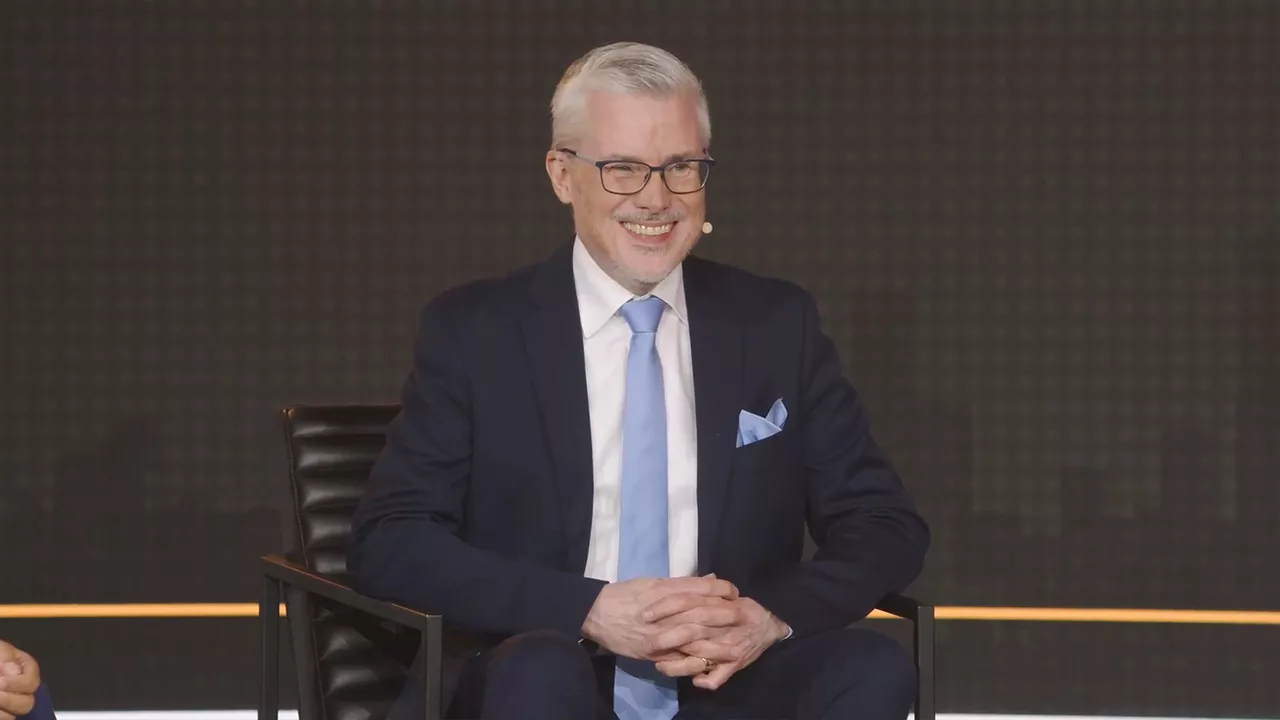
“Often, customers misunderstand that the company has to know blockchain themselves. A lot of competitors in the blockchain space are trying to educate customers in using the blockchain themselves, but my view is that just like every company today is using the internet, very few companies actually know HTML or TCIP. They’re just using the public internet… They just need solutions to their problems,” he said.
But if the blockchain is to be the silent fixer, how are blockchain-based businesses supposed to communicate their offering to customers? Is that possible without a weighty technical discussion about block sizes and data integrity?
Blarecast’s Booth-Spain offered his perspective: “It’s all about consumer need. We’re trying to make products that solve genuine consumer or business needs. Every applicable use case of blockchain has its own unique situations and events.”
“The question we often get from customers is: why blockchain when we can just store data in a database?” joined Nilsson.
“But there’s a big difference: what you have in a blockchain is also the payment functionality. You can now start monetizing information. You can put a price on very small pieces of information—often a 10th or 100th of a cent.”
Part of why this transition from ‘crypto’ thinking to ‘utility‘ thinking is so exciting is because as people start focusing on use cases, the true potential of blockchain is beginning to be uncovered. Henslee pointed out: “To say ‘this is useful for X’ is errant because we don’t know what people are going to do when transaction fees are that low.”
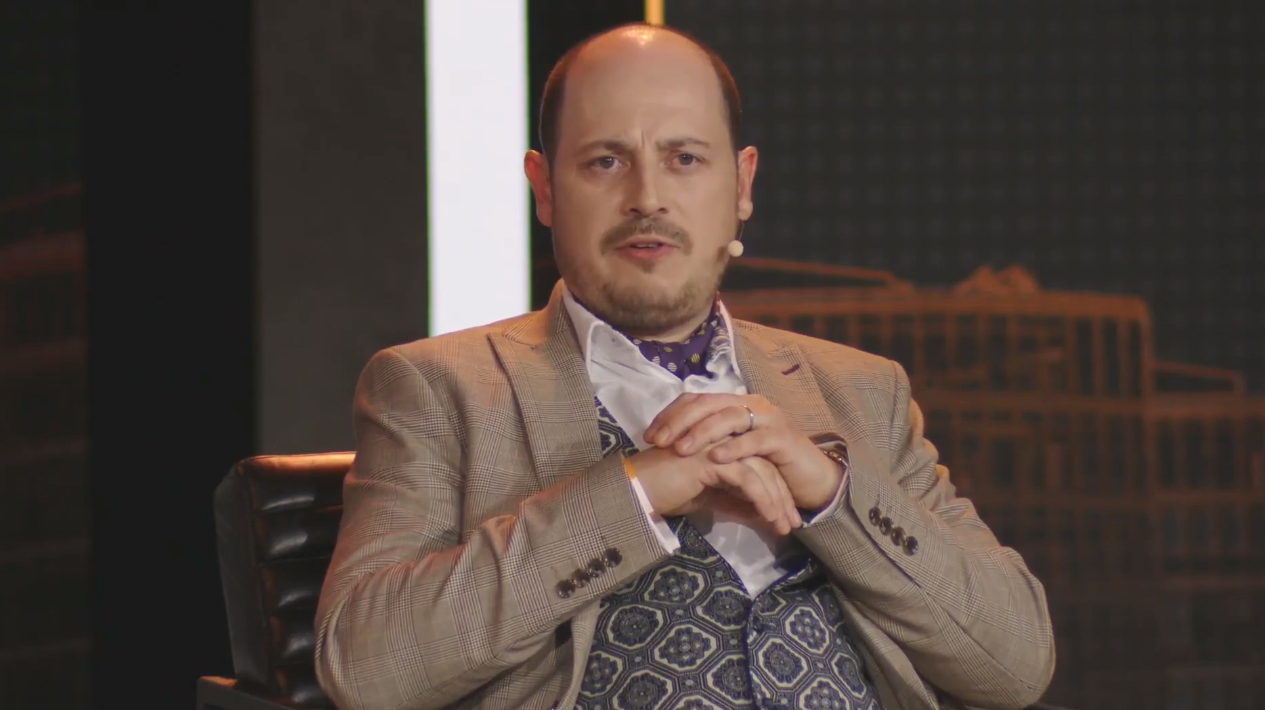
It’s a view that was well-subscribed among the panelists. Booth-Spain highlighted “these new use cases where we’re understanding—at a higher level—what Bitcoin and the blockchain can do. It’s going to lead to a renewed understanding of what Bitcoin and blockchain is. How can we start using the open ledger as a repository of data?”
One use-case raised by Light in the livestock context was helping to maintain the allure of farmwork among young people.
“There’s a concern worldwide of how to keep young people on farms. We look at future iterations, where we could look at gaming or scoring in terms of whoever cares for the animal best gets a high score.”
“That’s how unlocking the blockchain delivers wealth: it’s a mental wealth. Often the crypto market, I think that’s a test-case for the true Bitcoin blockchain. Remember that Bitcoin SV is the restored original protocol of Bitcoin: it’s the original, the real. It does 100,000 transactions a second. BTC does 5, if we’re lucky. Ethereum does 7,” continues Booth-Spain.
“If you’re able to do 100,000 transactions a second, that’s the fastest blockchain on earth right now. There’s no other technology that equals this pedigree. It’s the forefront of blockchain technology.”
Any of these panelists could have given a 45-minute keynote on how they use the blockchain to better their industry. Jam-packed as the LBC agenda is, Henslee’s panel could only scratch the surface of how data can be used to tell stories, and how those stories can be enormously beneficial. But that’s the point all the panelists seemed eager to make: the whole world is only now scratching the surface of what can be achieved with scalable, compliant blockchains. It’s the work of people like Booth-Spain, Nilsson, and Light that will show us what further value lies beneath the surface.
Watch: Build partnerships and become an innovator

 12-29-2025
12-29-2025 
